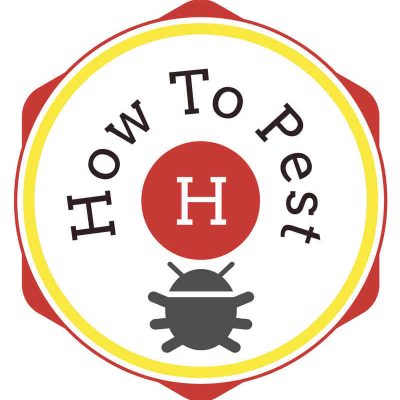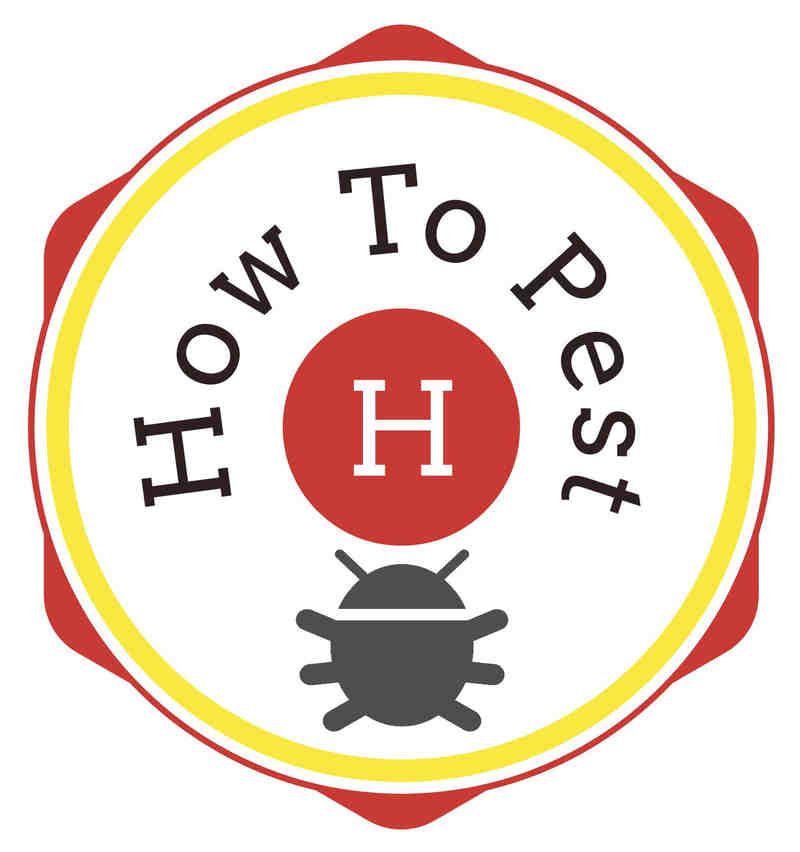If you think you’ve got termites, you probably do. So now what? Well, here’s everything you wanted to know about termites but were afraid to ask.
While there are hundreds of termite species throughout the world, all species fall under one of three types of termites— Dampwood, Drywood, or Subterranean. Let’s break it down.
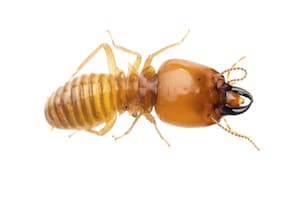
Dampwood Termites
As their name so accurately suggests, dampwood termites are all
about wood that is wet, or damp. Their survival is dependent
upon wood that contains high amounts of moisture. Water
damaged wood or wood that rests directly on the ground is likely
to attract dampwood termites. Dampwood termites are also drawn to stumps, lumber, fallen logs, and tree branches. If there’s moisture and the wet wood is in direct contact with the ground, you’ve found a buffet that dampwood termites can’t resist. Add in areas affected by roof leaks, cracked drain pipes, or plumbing issues and you’ve got a recipe for a dampwood termite infestation. Dampwood termites are considered to be the largest termites in the United States. When fully grown, the workers and soldiers under this species will have an approximate length of 1/2 to 5/8 inches.
Destructive little creatures, dampwood termites eat 24 hours a day, every day and can cause significant damage to homes by hollowing out support beams, ruining wood flooring, and destroying framework inside the walls. Because they don’t leave any evidence, like mud tubes, and cover their entry holes with their own feces, they remain hidden, which makes it possible for them to cause a great deal of damage before they
are discovered.
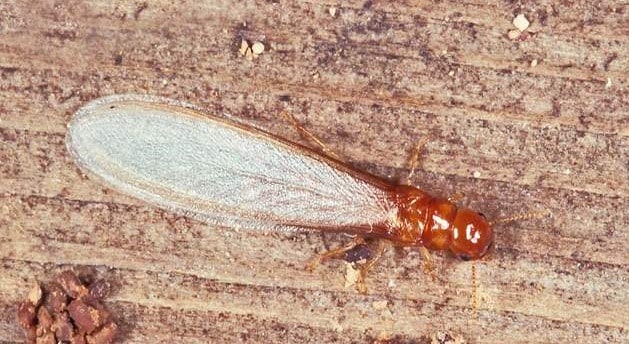
Drywood Termites
Unlike dampwood termites, drywood termites, as its name infers,
don’t need water and are often found in dry wood above ground level.
Drywood termites like to eat, and the wood they eat provides all the
moisture they need to survive, which is why wooden structures, like
homes, fences, decks, and trees are so appealing to them. They eat across the grain, which destroys both the softer earlywood (springwood) growth and the harder latewood (summerwood) growth. Because they eat cross-grain through all the layers of wood, the extensive network of tunnels they can create can lead to a building or tree collapsing. Since they basically eat from the inside out of your home or other structures, they are
hard to identify before causing significant and expensive damage.
Drywood termites are organized in a “caste system.” In each colony there is one queen, and once she chooses her mate, or king, she begins laying eggs. Once the eggs hatch, they join the worker caste that eats wood, likely causing damage, and cares for the rest of the colony. As the termite colony ages and matures, some of the termites develop into either the reproductive or soldier castes. Reproductive termites will eventually grow wings, leave the colony, and form their own colonies. Termites in the soldier caste will
protect the established colony from various threats. Drywood termites are also different sizes depending on their caste. Soldiers are typically three-eighths of an inch long. Reproductives (both male and female) measure
one-half of an inch in length, and the queen is generally closer to one inch long. Identifying drywood termites in a timely manner can be difficult since they basically eat from the inside out of your home or other structures. Because of this, significant and expensive damage may have already been done.
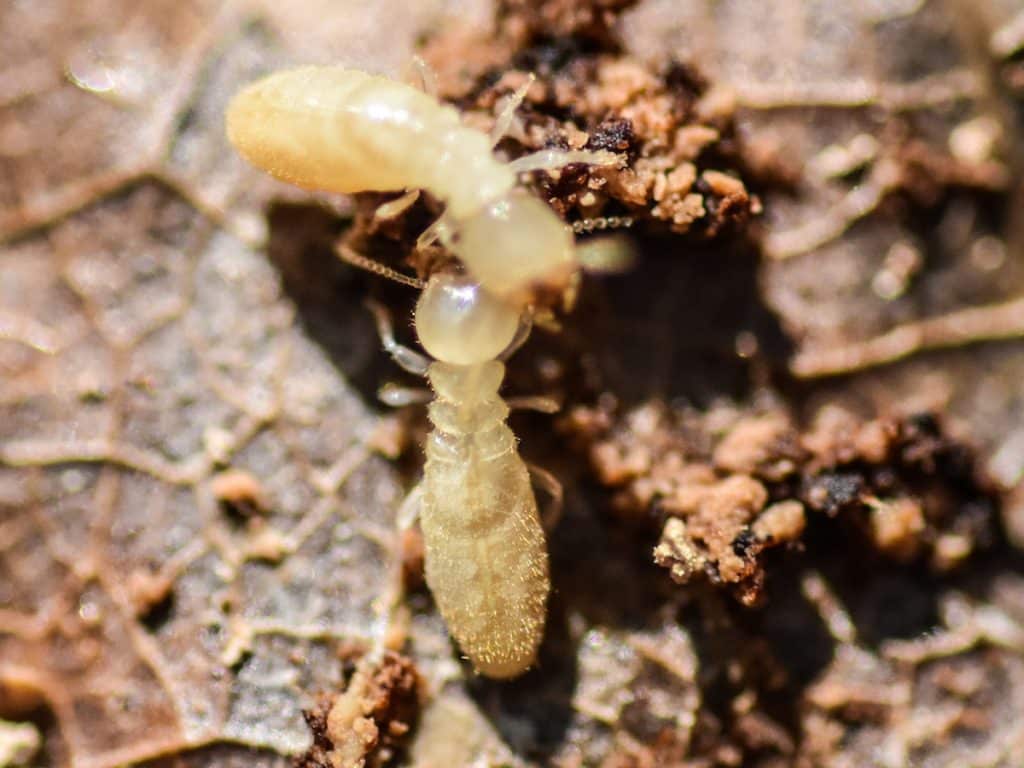
Subterranean
Last but not least are the subterranean termites, which
include the ever-so-popular Formosan variety. Also appropriately named, these subterranean pests infest homes from the ground up. Subterranean termites live in the soil beneath and around homes. They work their way
directly into damp or damaged wood or through mud tubes they build from the ground to the wood they infest, or along concrete foundations, or even through crawl spaces. Cracks in walls are also routes these termites can take to infest a house. Since subterranean termites build their nests underground, damaged wood likely will have an accumulation of soil or mud within the tunnels of the wood they are eating. Unlike the drywood termites, the subterranean termites only eat the softer earlywood, so
the damaged wood will appear to be layered, the result of the workers not eating the harder latewood portion. Also in contrast to the drywood termites, subterranean termites feed “with the grain” rather than across the grain. The size of subterranean termites depends on its caste. Termites in the worker and soldier castes measure one-eighth to three-eighths of an inch in length, but their bodies are different. Both primary and secondary reproductives measure about 1 inch in length. In addition, subterranean termites differ in color by caste. Subterranean termites are the most common type of termite nationwide. They have been known to cause billions of dollars in structural damage each year. Because some
colonies have more than one female that is laying eggs, subterranean termite nests can grow quickly and contain hundreds or even thousands of members. Since the pests can often infest homes for years undetected, responding to early warning signs is key to preventing serious damage. The most commonly observed warning signs for subterranean termites are the presence of winged swarmers, mud tubes, and evidence of damaged wood.
As with all varieties of termites, termite attacks are subtle, often going undetected for many years. Over time, they can cause serious and expensive damage, as they are currently credited with causing over a billion dollars in damage annually to homes in the United States. Thankfully though there are preventative measures that can be taken to protect your home against this destructive pest.
How To Get Rid of Termites:
- All firewood should be stored away from the home.
- Clear at least four inches around the foundation. Make sure there is no mulch or any other buildup touching the home. Siding should not extend down into the soil.
- Keep all drainage systems and rain gutters clear and free from debris, with the water being directed a safe distance from the home.
- Repair and eliminate all leaks and moisture from the home.
- Consistently treat your home with a professional grade termite pesticide.
Don’t wait for termites to show themselves. HowToPest has a number of products available for you to do your own termite treatments as well as products to help prevent termites from taking up residence in your home.
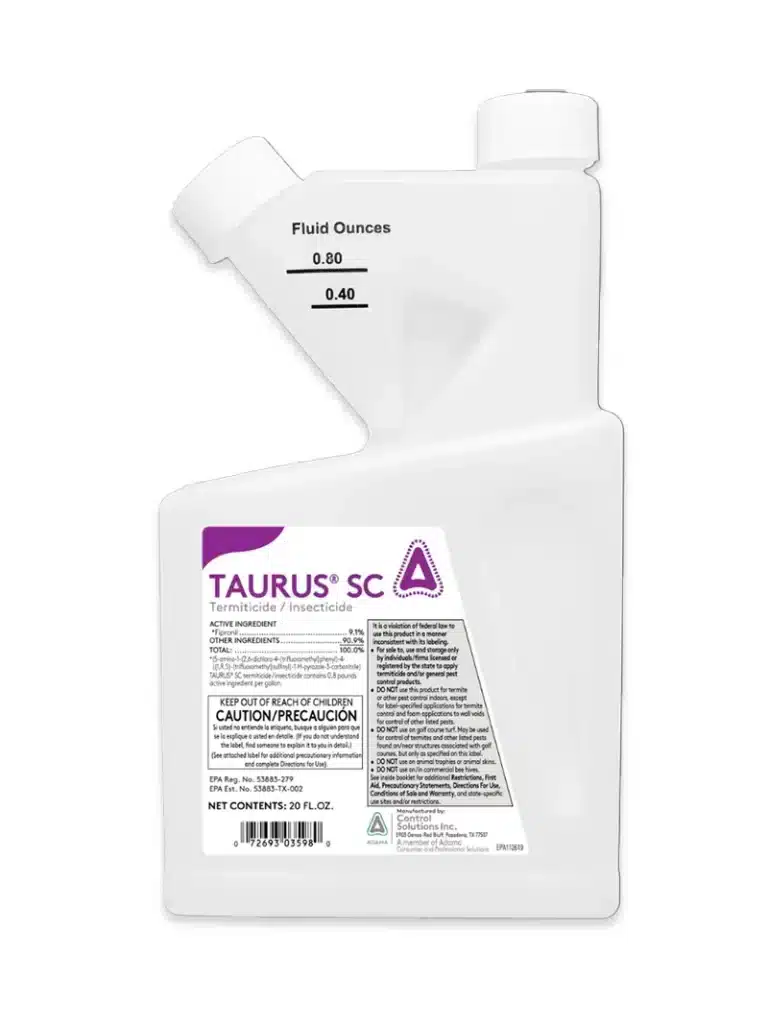
Taurus SC Termiticide Concentrate
Fast Free Shipping!
Want a 1, 2 punch when it comes to pest control? Well, Taurus SC Termiticide/Insecticide provides top-notch control for termites (subterranean, arborel, drywood, and dampwood), cockroaches, ants, millipedes and a variety of other pests. The active ingredient in Taurus SC is 9.1% Fipronil, which kills insects when they eat it or come in contact with it. It is undetectable to the pests that are being targeted which results in the insects either coming into direct contact, ingesting, or spreading the insecticide throughout the colony. Taurus SC has been proven to annihilate termite colonies within 90 days and ant colonies within a few weeks. Outdoors Only. Check out our video on how to use Taurus SC under the above product image or on our Video Tutorials page!
Product Features:
- Water-based
- Up to four (4) applications per year at the 0.03% dilution rate for outside surfaces and along the foundation perimeter of listed structures
- 10 year Promises of Protection warranty
- Exterior Perimeter/Localized Interior (EP/LI) Language
- Labeled for barrier applications targeting occasional invaders around structures
- For pre- and post-construction termite applications
- Labeled for perimeter pest applications
Sizes:
- 20 oz.
- 78 oz.
